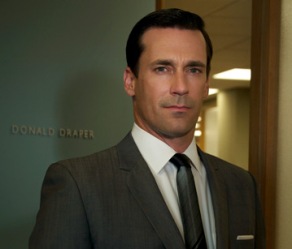Hear from VP of Marketing & Advertising, Mark Morrell, on The Exchanges’ experience with personalization to help military personal feel valued and honored for their service.

Can Jeff Bezos Turn the Tide at The Washington Post by Introducing Personalization?
When I read about Jeff Bezos buying the Washington Post, I was surprised and also hopeful. I am a big Bezos fan and if anyone can transform the “newspaper industry,” I think Mr. Bezos can. Will he bring newspapers into the 21st century just as he did retail with Amazon? Will the Post begin to use personalization to engage readers with their content? Will they use personalization to deliver the most relevant ads to their readers? A large part of Amazon’s success is due to their personalization prowess, and Bezos is Amazon.
Think about it: Amazon wows its customers with their ability to know what you want and/or need, be it on the commerce or the customer service fronts. I’ve drunk the Amazon kool-aid. I probably spend 80%+ of my non-perishable grocery retail purchases with Amazon and you know why? Because I feel like they know me, like I’m a member of their family. Personalization works!
And if for some reason, they get me wrong now and again, I go online or pick up the phone and ask for help. I don’t cringe before contacting Amazon’s customer service center and our interaction never ends with me wanting to scream in frustration. (We’ve all been there with other companies’ customer service, right?) Amazon performs head-and-shoulders above its competition on both commerce and service because they have all this big data they’ve collected about me. And they use it wisely, to make my life better. My life being better > Concern about Amazon collecting my data for personalization.
But…
Can product and customer personalization be transferred to the editorial content world? That’s the story I’ll be following. If a newspaper–print or digital–could engage me with extremely relevant editorial content the way Amazon does with goods and services, they would definitely get my loyalty. And if. while reading the articles, I only (or mostly) see only those ads that are relevant for me, I would probably also become loyal to those advertisers. Probably.
One of the things I love about my job at Nectar is sharing with our customers how we deliver value to their business by enabling them to micro-target messages to their customers. Recently, while reading McKinsey Quarterly articles on big data, I saw a couple of statements from McKinsey directors that really resonated with me, because it addresses the core of Nectar’s value proposition.
1) From David Court: “…the key is to focus on the big decisions for which if you had better data, if you had better predictive ability, if you had a better ability to optimize, you’d make more money.”
2) From Tim McGuire: “Analytics will define the difference between the losers and winners going forward.”
I believe that if you make your customers happy, they will be loyal to you, and loyalty generally translates into greater revenue (and less cost) for your company. How do you make your customers happy? By knowing them. Know how they interact with you, know what they buy from you, know what they like about you, know who they are. At an individual level. Of course, this is easier said than done. But with the right tools and data, it can be done.
When, where, what and how you communicate with your customer is one of those big decisions. Using the data you already have from your customer and combining it with other big data–online behavior, social, CRM, mobile, etc.–enables you to predict what that customer would want to hear from you. This predictive ability, in turn, allows you to optimize your relationship with that customer, which then helps you make more money. (I use the singular “customer” because that’s what a robust Digital Management Platform enables you to do: communicate with each of your customers as an individual, yet do it at scale.)
Technology exists today to bring all of your available big data together to build a foundation from which to make your big decisions. A company like Nectar can help you bring all this data together to enable you to build 360 degree profiles of each of your customers. But we don’t stop there; we then apply our proprietary algorithms to analyze your customer profiles to determine the most relevant communications to deliver to each customer–we call this hyper-personalization. To complete the circle, we then help you distribute consistent hyper-personalized messages across every digital channel your customer uses.
We like our perch at the intersection of big data, analytics and hyper-personalization because when we bring each of these tools to bear for our customers, big decisions not only become easy but they also make you money.
Want to learn more? Please email contact@nectarom.com for more information.

In honor of the Mad Men Season 6 premier this weekend, we’d like to take this moment to take a walk down Marketing Memory Lane, From mass marketing to demographic segmentation to customer segmentation to personalization. And now with Nectar, hyper-personalization.
Before the era now inextricably linked with Don Draper, all consumers received the same products, the same messages and the same ads, in the same medium(s). As Henry Ford once famously said, “Any customer can have a car painted any color that he wants so long as it is black.”
Then came those famous Ad Men (and yes, they were mostly men) of Madison Avenue. They realized that men and women actually hear, read and remember things differently. So these Mad Men placed “male-oriented” products, like aftershave, in sports magazines or the sports section of the newspaper. Products “for women” were advertised on TV during the middle of the day, thus the term “soap” opera, a tip of the hat to sponsor Procter & Gamble and their detergents. This demographic segmentation became more and more specific as time passed, differentiating marketing for marrieds vs singles, high income vs low, urban vs suburban, black vs white, and so on.
As companies began to gather more and more data on their customers and computers became increasingly powerful, smart businesses realized there was an even better way to market. Customers could be grouped into similar segments and marketed to according to their similarities. After all, not all women are created equal. Some of us like brand names. Some of us refuse to buy anything without a coupon. And some of us try to shop as infrequently as possible–hard to believe, but we exist! The hypothesis was that If brands could speak to each segment in a way that resonated with that segment, customers would buy more. And they did! Segmentation not only improved customer loyalty, it also reduced the cost of doing business.
With the advent of the internet and the wealth of data it provides, targeting has become increasingly defined. Savvy companies track not only customer purchases, but what customers are looking at when they are on the brand’s site. Some even combine internal digital data with bricks & mortar data. All this data allows businesses to relate to their customers more effectively. This 0ersonalization is the precursor to hyper-personalization.
But what if a brand could speak to a customer on an individual level, aka hyper-personalization? That’s what Nectar’s proprietary software allows brands to do! By combining all digital data available (purchases, online and email click behavior, CRM data, mobile, and so on) with social information, companies can now market to their customers in a 1:1 manner, yet do it at scale.
Today, we may go to the office in blue jeans rather than dapper suits, we may no longer be able to smoke wherever we please, we may not be able to have the 3-martini lunch anymore, but we can speak to our customers in a way that’s much more relevant for them: hyper-personalization. Now, please excuse me, so I can go spend an hour with Don Draper. Cheers!





